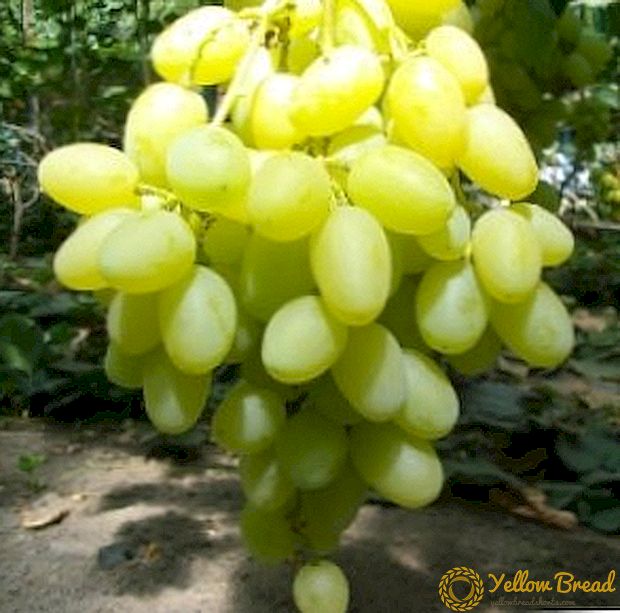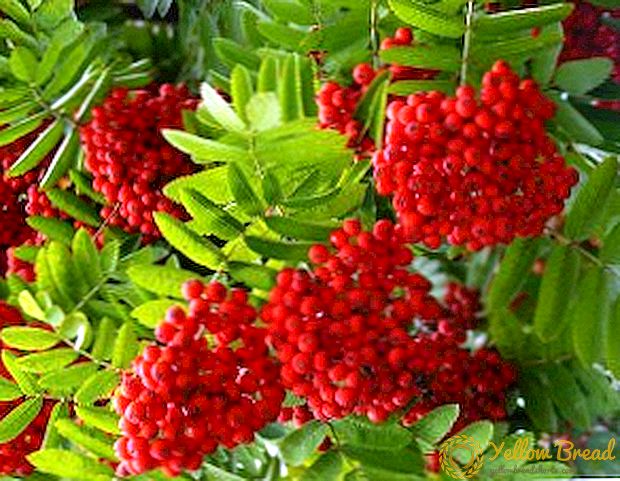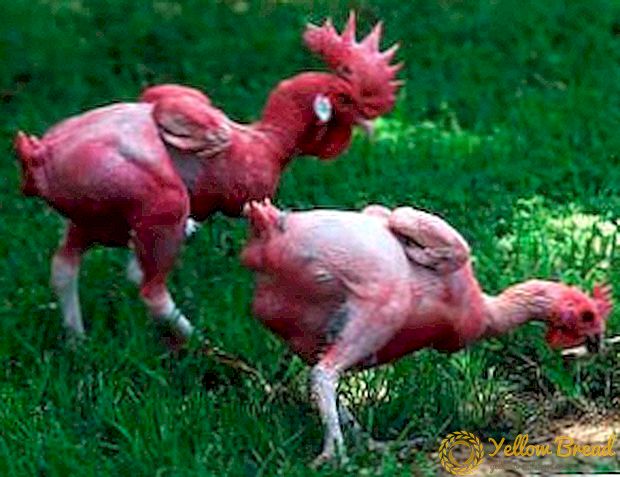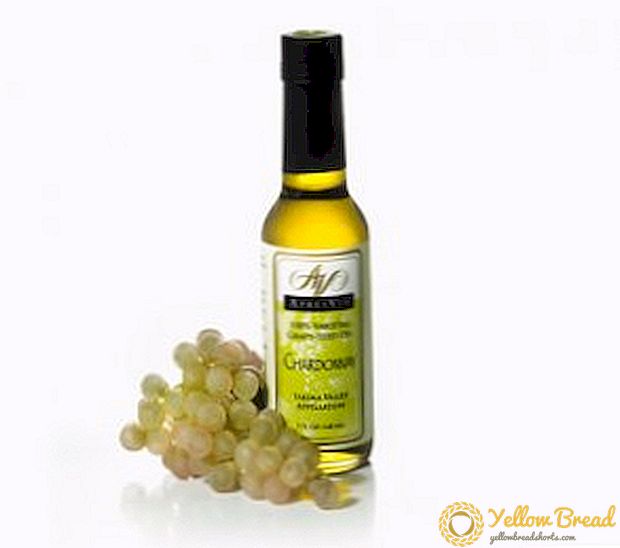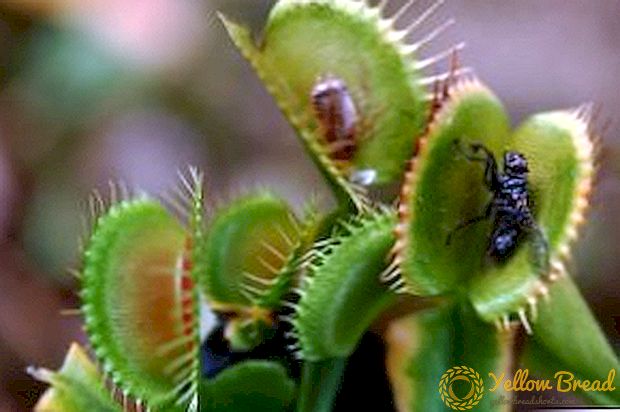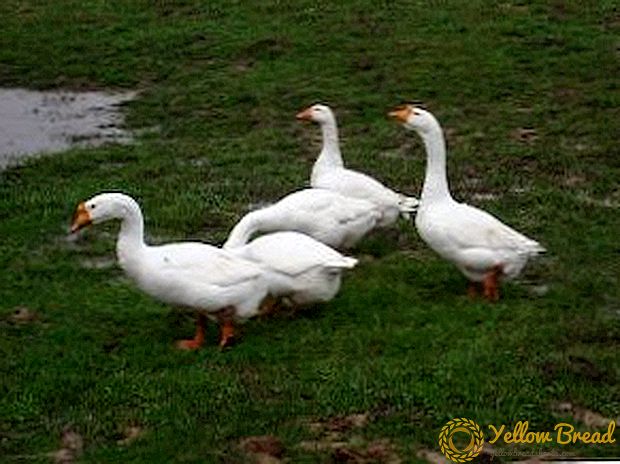 People have been engaged in gusevodnost since ancient times, now it is the leading branch of modern agriculture. Around the world, geese are grown on private farms and small farms, and they are second in importance after chickens. They are appreciated for tasty meat, dietary liver (the leading producer of France), for down, feather and, of course, for beauty. Collectors spread huge sums for rare breeds, for example, for ribbon geese, for their goslings and hatching eggs.
People have been engaged in gusevodnost since ancient times, now it is the leading branch of modern agriculture. Around the world, geese are grown on private farms and small farms, and they are second in importance after chickens. They are appreciated for tasty meat, dietary liver (the leading producer of France), for down, feather and, of course, for beauty. Collectors spread huge sums for rare breeds, for example, for ribbon geese, for their goslings and hatching eggs.
Currently emit Three main breed types:
heavy (meat);
medium (decorative);
lightweight (for industrial use).
The main advantages and disadvantages of the most common breeds will be discussed in detail below.
- Short description
- Lindovskaya breed
- Breed description
- Appearance
- Merits
- disadvantages
- Productivity
- Egg description
- Kholmogory breed
- Breed description
- Appearance
- Merits
- disadvantages
- Productivity
- Egg description
- Toulouse breed
- Breed description
- Appearance
- Merits
- disadvantages
- Productivity
- Egg description
- Tula geese
- Breed description
- Appearance
- Merits
- disadvantages
- Productivity
- Egg description
- Danish Legart
- Breed description
- Appearance
- Merits
- disadvantages
- Productivity
- Egg description
Short description
You stand before the election, what breed of geese is better to buy? Currently, there are more than 25 different goose breeds. Each has its own advantages and disadvantages, as well as features of breeding and care. In order to properly prioritize the need to understand why you are making the acquisition?
Modern breeds are divided into types:
heavy (meat);
They are bred for the sake of obtaining valuable dietary meat and liver (the leading producer of France). Toulouse, Kholmogorskaya, Lindovskaya, Large gray rocks are considered the most difficult.
medium (decorative);
These are unique not numerous breeds which are famous for the high esthetic characteristics. Adult individuals, goslings, and hatching eggs are bought by collectors at a “fantastic” price.
light (they are bred for industrial purposes).
We will talk about the advantages and disadvantages of different breeds in this publication.
Lindovskaya breed
Breed description
 It is a hard rock popular with gusevovods, deservedly recognized as the world's rays,because it has a number of undeniable advantages. Officially, the breed was approved in 1994, the birthplace of these geese is Nizhny Novgorod Region. The breed was bred by domestic breeders, crossing ordinary Russian geese with Chinese ones. As a result, they received a precocious, fleshy appearance, which they called Gorky. In order to make the breed worse, to increase the fleshiness, as well as to improve the quality of down and feather, the geese were crossed with Arzamas and Landa ganders. Representatives of the new species were crossed with each other in order to improve the pedigree qualities through individual selection, and this is how a modern and outstanding breed appeared. In Russia, 50% of all available geese are attributed to this breed.
It is a hard rock popular with gusevovods, deservedly recognized as the world's rays,because it has a number of undeniable advantages. Officially, the breed was approved in 1994, the birthplace of these geese is Nizhny Novgorod Region. The breed was bred by domestic breeders, crossing ordinary Russian geese with Chinese ones. As a result, they received a precocious, fleshy appearance, which they called Gorky. In order to make the breed worse, to increase the fleshiness, as well as to improve the quality of down and feather, the geese were crossed with Arzamas and Landa ganders. Representatives of the new species were crossed with each other in order to improve the pedigree qualities through individual selection, and this is how a modern and outstanding breed appeared. In Russia, 50% of all available geese are attributed to this breed.
Appearance
They have a large constitution, the live weight of an adult individual is on average about 8 kg. These geese can not be heavier than 12 kg. Their plumage is white (after the pluck, the carcass looks neat and appetizing).
Such geese have an elongated head with an original frontal bump; it appears for the first time in seven-month-old goslings. The trunk of an adult bird is long and powerful.
Merits
The main advantages of the breed are:
early maturity;
Goslings quickly gain weight, 2 times faster than other breeds.Already by 5 months they can weigh about 7 kg, and a year - 11 kg, this is a direct sign that breeding such birds is beneficial.
high egg production;
With proper care, the spring goose is able to give one egg per day.
resilience of young stock;
Goslings rarely get sick, they are hardy and not whimsical in food since the second week they can be fed as adults.
dietary meat;
Goose meat is very tasty, with a delicate texture and an appetizing flavor.
excellent adaptive capabilities;
 The bird is hardy, it quickly adapts and perfectly endures both cold and heat. It can live at a forty-degree frost without losing its breed characteristics. The bird does not like drafts - this is the only requirement that it places on the habitat.
The bird is hardy, it quickly adapts and perfectly endures both cold and heat. It can live at a forty-degree frost without losing its breed characteristics. The bird does not like drafts - this is the only requirement that it places on the habitat.
peacefulness;
Geese are absolutely conflict-free, they live peacefully with each other, do not conflict with their neighbors in the poultry yard. 100% payback of production;
The profitability of breeding birds is very high if you follow all the rules for their maintenance, feeding and breeding. Geese are picky in their food, thanks to this, the cost of feed is significantly reduced and profits increase significantly.
disadvantages
The breed has many weaknesses, the main ones are:
susceptibility to the disease hymenolepitism
The disease affects young animals, whose intestines are not yet well adapted to digest river mollusks and algae. Sick individuals become lethargic, they observe indigestion and convulsions. For prophylactic purposes, the gooses gradually add algae, and later fish, in small portions.
avitaminosis;
This condition is observed in the spring of many birds of this breed, after they did not have regular walking in the winter, and the food was not very diverse. breeding is effective only at the reservoir.
Breed valuable qualities are lost if the birds do not lead to the reservoir.
Productivity
An indicator of the safety of livestock goslings is 90%. Goslings have a high growth potential at 2 or 3 months, they weigh 4 kg, and they have a period of active growth at 3 months of age. At this time (August-September) very cheap feed and a lot of vegetables.
Forty-day goslings can be quietly located in a pond, their diet almost entirely consists of simple grass, which allows farmers to save on expensive grain feeds.The geese are ready to mate at eight months, the mother goose has excellent hens and the geese are caring parents.
Egg description
They lay about 50 eggs, with good care healthy strong birds carry up to 70 eggs for the entire laying period. Eggs are not easier than 140 g and heavier than 170 g, they have 90% fertility and high (70% -80%) hatchability of viable goslings from hatching eggs.
Kholmogory breed
Breed description
This is the best breed for those who want to breed geese on a private farm for their own needs and for rare small wholesale sales.
Appearance
 The birds of this breed have a strong build, a large body, which is set horizontally. They have a long powerful neck, a strong straight back and a rounded chest. They are distinguished by the original curvature of the beak and the characteristic bump on the forehead. In geese with white plumage, the beak is orange, and in birds with gray or pinned plumage - dark, gray.
The birds of this breed have a strong build, a large body, which is set horizontally. They have a long powerful neck, a strong straight back and a rounded chest. They are distinguished by the original curvature of the beak and the characteristic bump on the forehead. In geese with white plumage, the beak is orange, and in birds with gray or pinned plumage - dark, gray.
They have two more distinctive features: it is a sub-blunt growth (it is called a “wallet”), as well as an original pair of folds on the abdomen.
Merits
Indisputable breed benefits include:
rapid weight gain in young animals;
strong immunity (they rarely get sick);
unpretentious to the habitat conditions (they tolerate frosts in the event that the house is organized correctly);
pasture type of feeding (farmers can save on the purchase of expensive grain feed);
give high quality meat, fat, fluff and feather;
high parental ratio (geese patiently incubate eggs and take care of babies).
disadvantages
The main weak points of the breed are: small egg production;
too heavy goose-hens crush eggs in the nest;
they develop poorly without a reservoir.
Productivity
 Goslings ripen quickly, already at nine weeks of age, they gain lethal weight of 4-4, 5 kg. Some males reach 12 kg, while females reach 8 kg.
Goslings ripen quickly, already at nine weeks of age, they gain lethal weight of 4-4, 5 kg. Some males reach 12 kg, while females reach 8 kg.
The quality parameters of breeding largely depend on the cleanliness of the room, which is determined by the freshness of the litter. In winter, it should consist of peat or hay, in the summer of sand and sawdust, which is covered with straw cutting. It is important to ensure that the bird is not hungry, otherwise it pecks sawdust, and this is harmful for its digestion. It is important to regularly change wet litter to dry.
In order for biomass to grow stably and egg production is not below the norm, the geese must be properly fed. It is important to give each about 0.13-0.16 kg of grain and flour, the feed may consist of whole grains, crushed hay, legumes, and also root crops. As an additive give sauerkraut, as well as original products that optimize digestion and metabolism.
Egg description
The birds' egg capacity makes 30 pieces a year, eggs weigh on average not less than 180 g, and not more than 200g. Egg-laying can begin in February if the birds eat properly and they are properly cared for.
Toulouse breed
Breed description
 She is deservedly recognized as the most productive breed in the world. These are the largest domestic geese in the world, they are actively bred in all countries. The breed appeared in France in Toulouse, where breeding work began, for which the most productive individuals were selected, eventually a breed was obtained that has no equal in terms of production profitability.
She is deservedly recognized as the most productive breed in the world. These are the largest domestic geese in the world, they are actively bred in all countries. The breed appeared in France in Toulouse, where breeding work began, for which the most productive individuals were selected, eventually a breed was obtained that has no equal in terms of production profitability.
Thanks to this breed, Europe’s need for goose has been satisfied for several centuries. These birds are flooded farmsteads of private farms.They are grown for the sake of delicious meat, first-rate fluff and liver, which is recognized as a delicacy.
Appearance
These geese have a wide head, a strong, thick and short neck, a massive wide body set horizontally, powerful short legs and a straight orange beak. The feathers of the bird are greyish-whitish in color, the head is dark gray, the belly and belly are white, the neck and chest are light gray, and the tips of the wings are black.
These are squat, stocky and slow birds. Currently, they are divided into two main types:
purse;
These are sedentary massive geese, which may or may not have the original fold of fat on the abdomen, as well as they have a so-called "wallet" - these are sagging folds at the base of the head. They are far superior to other breeds in weight, but inferior in reproduction.
beskorelkovy;
Such birds do not have a "purse", they are lighter and more mobile, and more prolific.
Merits
Indicative breed advantages are:
unsurpassed high growth rate;
record weight;
easy and inexpensive feeding;
first-class down;
the ability to accumulate impressive fat reserves.
disadvantages
Weak breeds believe:
effeminacy;
low mobility;
excessive looseness of the constitution;
weak instinct for planting eggs;
poor tolerance to low temperatures and high humidity.
Productivity
In industrial production, large hussies reach 11.6 kg, the young goose most often weighs about 7 kg. On private household farms the weight of the birds does not exceed 10 kg in goose dogs and 8 kg in geese.
It is these birds that are grown to produce a dietary liver, which can reach 500 g. Such geese quickly accumulate fat, therefore they are the main suppliers of raw materials for the famous French delicacy pate.
The productivity of birds is largely dependent on the quality of their care and on the usefulness of their nutrition. They are thermophilic therefore in the room where they are kept it is important to maintain a temperature of 20 ° C and to exclude the occurrence of drafts. They always have to feed clean and fresh, it can be made from sawdust and hay, but it is better to use sphagnum moss. It quickly absorbs moisture, and these geese do not like high humidity.
In order for the profitability of investments to be high, such geese are fed twice a day, at night they consume significantly more food than during the day.They are regularly brought to pasture and give mostly succulent feed, as well as corn, wheat, feed, worms, grain and special "mash".
Egg description
The egg production of such birds is low, it does not exceed 40 pieces per season. They do not carry less than 30 pieces per year, while the weight of eggs varies between 150-200 g. In the morning they give one egg every couple of days. Successful incubation does not exceed 60%, in order to increase this value the eggs are placed in an incubator.
Tula geese
Breed description
 This is an old fighting breed that has existed for several centuries. Exact data on its origin is lost. It is believed that they were bred in the 17th century by the special order of wealthy merchants who willingly watched the fights of waterfowl. The breed was created by selecting the most aggressive and successful fighters. These are strong birds with good immunity.
This is an old fighting breed that has existed for several centuries. Exact data on its origin is lost. It is believed that they were bred in the 17th century by the special order of wealthy merchants who willingly watched the fights of waterfowl. The breed was created by selecting the most aggressive and successful fighters. These are strong birds with good immunity.
Appearance
A distinctive feature of the breed is a short beaked crook, according to its shape, species of birds are divided into three kinds:
rogany (the upper line of the beak is concave, and at the base grow conical bony formations similar to horns);
straight-bearing (it possesses a beak, not characteristic of a breed, even without a humpback);
steep-nosed (the beak is curved in such a way that it forms one continuous line with the head).
They have all the external signs of the fighting breed: short, strong and thick neck, powerful broad chest, the body can be called a knocked down, widely spread legs are short and strong. The color is predominantly clay gray or white.
Breed defects of appearance are considered:
orange eyelids and red eyes;
reddish orange beak;
humpbacked back;
klyuvny wallet;
a pair of fat folds on the abdomen;
inverted wings.
Merits
an original sports breed, appreciated by those who love to watch bird fights;
endurance and disease resistance;
well developed musculature;
they are easy to care for; they are unassuming towards food and conditions;
high taste of meat, which is evenly saturated with fat.
disadvantages
The main breed "cons" include:
low growth rate (the bird matures only by the 2nd year);
relatively small weight (they are rarely heavier than 8 kilograms, their standard weight is 5-6 kg.);
small egg production (within 25 eggs per year);
complex nature (they hardly get on with their neighbors in the bird yard).
Productivity
 Experts evaluate the breed in terms of the availability of fighting qualities. The strongest are five and six year old birds. Birds should be able to fight only with wings; bites on the head and on the paws are not allowed. Fights last 20 or 40 minutes; blood spilling is not allowed. The wrestler supports the host and his favorite geese.
Experts evaluate the breed in terms of the availability of fighting qualities. The strongest are five and six year old birds. Birds should be able to fight only with wings; bites on the head and on the paws are not allowed. Fights last 20 or 40 minutes; blood spilling is not allowed. The wrestler supports the host and his favorite geese.
Such geese perfectly tolerate frost, walk on the snow and swim in cold waters. For their cultivation, pastures and water bodies are needed, in addition they are fed with cereals: oats, corn, and sometimes wheat. In winter, they are given grated carrots, beets (semi-sugar and fodder), and cabbage leaves.
Egg description
Goose caring mothers, so you can do without an incubator. They begin laying in late February, young females a little later. They carry white eggs weighing about 150 grams, laying usually consists of 18 eggs, but no more than 12 pieces are left under the mother, because she can crush the hatched ducks or eggs.
Three-week babies are very vulnerable, they can not be released into the cold and dew.
Danish Legart
Breed description
 This is the most popular hard breed among prudent and pragmatic business executives.The pedigree goslings are gaining weight very quickly, and a two-month-old youngster weighs about six kilograms.
This is the most popular hard breed among prudent and pragmatic business executives.The pedigree goslings are gaining weight very quickly, and a two-month-old youngster weighs about six kilograms.
At the same time, they eat 20% less than fellows of other breeds. The diet of spectacular beauties is mostly herbal, so farmers have a small cost to feed. Geese are characterized by high energy growth and vitality, they rarely get sick and feel great in all weather conditions.
This is a Danish breed, which is also valued for high-quality down. Experts say that you can pinch 11 monthly individuals and repeat the procedure every two months. About 500 g of excellent fluff is collected per year.
In addition, such geese have a calm, benevolent disposition; they practically do not conflict with anyone; even children can take care of them.
Appearance
 The distinguishing characteristics of the breed are:
The distinguishing characteristics of the breed are:
elongated body of a deep structure;
dazzling white color of plumage, without shades and impregnations;
fatty fold on the belly;
they are blue-eyed;
beak and paws only yellow;
characteristic slow and stately gait;
goodwill and appeasability.
These are heavy birds, females reach a weight of 7 kg, and, as a rule, they are not lighter than 5 kg.And males often weigh about 8 kg.
It is important to note that these are unusually beautiful birds that are blinded by white plumage (especially after molting).
Merits
Indisputable advantages of the breed consider:
hassle-free and low-cost content;
excellent hatching of young stock;
first-class down;
high aesthetic characteristics (they will decorate any yard);
ideal for small homesteads;
minimum feeding costs (in the winter their diet only includes 20% of expensive grain).
disadvantages
Among the weaknesses of the breed emit: very low egg production, mother-goose can lay no more than 40 eggs per year;
low hatchability of chicks, it is only 60-65%;
Weak offspring, goslings require careful and constant care, they must be vaccinated and daily supplemented with vitamin mixtures.
Productivity
In order for the offspring to be numerous healthy and strong, the bird should eat about 2 kg of fresh grass per day, as well as some cereal or grain as complementary foods in the evening. In winter, they are given hay and Jerusalem artichoke, they love this root vegetable very much, and it strengthens the immunity of birds.In the cold season, they switch to three meals and add sugar beets and carrots to the diet. Drinking water with clean fresh water should be available at any time of the year.
Birds show high rates of productivity, while not requiring special conditions of detention and special care measures. The percentage of mortality of such birds is very low, the young growth is growing rapidly, in a short time, gaining slaughter weight.
The gander is ready to mate 270 days after birth, the goose is three weeks earlier. They lay eggs in April.
Egg description
In laying, as a rule, not less than 30 eggs, the maximum number - 40 eggs. In the geese, the incubation instinct is very weak, so farmers often use incubators, nevertheless, the survival rate of the goslings is high, they grow quickly and quickly recover.

